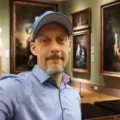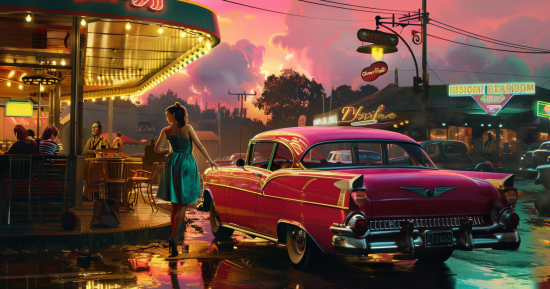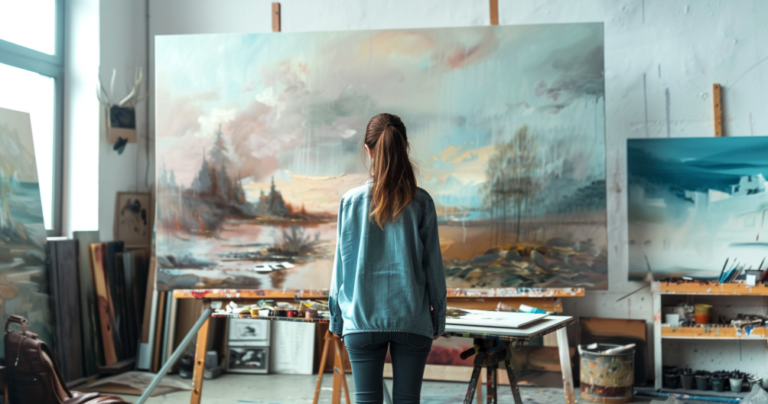Start by understanding the essential elements of concept art, such as character design, creature creation, and landscape development.
Make Concept Art
You can focus on developing a strong foundational skill set to make your concept art stand out. Tools like CLIP STUDIO PAINT can be incredibly helpful, offering a digital platform with features and tools specifically for concept art.
Understanding Concept Art

Definition and Purpose
Concept art has roots in the early 20th century when illustrators began creating detailed sketches and paintings to visualize film and theater productions. Over time, this practice evolved with advancements in digital tools, becoming an integral part of pre-production in various industries. The historical significance highlights how concept art has adapted to technological changes while retaining its core function of visual storytelling.
Historical Context
Concept art has roots in the early 20th century when illustrators began creating detailed sketches and paintings to visualize film and theater productions. Over time, this practice evolved with advancements in digital tools, becoming an integral part of pre-production in various industries. The historical significance highlights how concept art has adapted to technological changes while retaining its core function of visual storytelling.
Industry Applications
Concept art plays a crucial role in multiple sectors. In the film industry, it’s used to design characters, settings, and props, aiding directors and producers in visualizing scenes. For video games, concept artists create the imagery that sets the tone and style of the game world. Animation studios rely heavily on concept art to plan characters and environments, ensuring visual consistency throughout the production.
Variations Across Media
Different media require distinct approaches to concept art. Realistic and highly detailed art is often necessary in film and television to guide the creation of sets and practical effects. Video games, on the other hand, may prioritize stylization to match gameplay mechanics and artistic direction. Animation focuses on exaggerated features and dynamic poses to enhance visual storytelling. Each medium presents unique challenges and opportunities for concept artists.
Creating Concept Art

Essential Tools and Software
To start, you’ll need the right tools and software. Many concept artists recommend graphics tablets for precision and control. Programs such as Adobe Photoshop, CLIP STUDIO PAINT, and Corel Painter are popular choices. These tools offer extensive brushes, layers, and effects that cater to various art styles.
Online platforms like ArtStation and Clip Studio provide tutorials and resources to help you get started. Staying updated with new features and techniques can significantly enhance your skills.
Developing Your Idea
Concept art starts with a solid idea. Engage in discussions with directors and creative stakeholders to define the vision, themes, and mood. Having a clear concept ensures everyone is aligned and helps in producing cohesive art.
The Artistic Process
Begin with basic shapes and forms. Many tutorials suggest using a basic 3D model to speed up the process. For instance, you might take a model and modify it using tools like liquify to achieve interesting base shapes, as shown in some free concept art tutorials.
Focus on proportions and anatomy if you are creating characters. For environments, establish perspective and scale. Gradually add details, textures, and colors to bring your work to life.
Refining and Finalizing
The final stage involves refining your piece. To enhance realism, pay attention to details such as lighting, shadows, and textures. Use layers to adjust elements without affecting the entire artwork. Make sure to polish and review the finer points.
Get input from peers or mentors on aspects that need improvement. This step is crucial for catching mistakes and perfecting your artwork. Ultimately, the balance between artistic vision and practical feedback results in a polished, professional piece.
FAQ: Make Concept Art
What are the basic steps to start making concept art?
To begin creating concept art, start with a strong idea or theme. Sketch initial thumbnails to explore composition and design. Refine these sketches into more detailed drawings, focusing on shapes, forms, and proportions. Add shading and colors to bring your concept to life. Review and revise your work as needed.
What techniques are used to create appealing concept art for video games?
Concept art for video games often involves techniques like dynamic composition and perspective to create excitement. Use lighting to set the mood and color schemes that fit the game’s tone. Utilize a mix of digital and traditional tools to iterate quickly. Focus on creating unique and engaging characters and environments.
How can beginners approach creating their first piece of concept art?
Beginners should start small. Choose a simple subject and create basic sketches. Don’t stress about perfection; aim for practice and improvement. Study various styles and learn from tutorials. Experiment with different tools and techniques to find what works best for you.
What are some tips for drawing character concept art effectively?
When drawing character concept art, focus on understanding anatomy and proportions. Develop a clear personality for your character through pose, expression, and clothing. Use reference materials and consider the character’s role in the story or game. Always start with rough sketches and refine them gradually.
What processes are involved in turning concept ideas into actual drawings?
Translating ideas into drawings involves ideation, sketching, refining, and finalizing. Begin with quick thumbnail sketches to explore different concepts. Select the best ones and develop detailed line drawings. Add shading, color, and texture to enhance the design.
How do you develop a unique style for your concept art?
Developing a unique style involves consistent practice and experimentation. Draw inspiration from various sources, but don’t mimic. Instead, adapt elements you admire into your own work. Push your creativity by trying new techniques. Over time, your preferences and influences will blend into a distinctive style.






